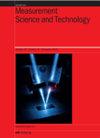GPS + 5G 融合实现高精度时间传输
IF 3.4
3区 工程技术
Q1 ENGINEERING, MULTIDISCIPLINARY
引用次数: 0
摘要
随着第五代(5G)移动通信技术的不断发展和日益普及,其与全球导航卫星系统(GNSS)数据的融合可以有效改善服务中断或卫星信号接收不良的问题。本研究对 GPS 和 5G 数据进行了融合,实验算法结果表明,它能有效提高时间传输的频率稳定性和可靠性。此外,该技术还降低了时间传输时钟偏移序列的噪声水平,同时抑制了短期突变。通过模拟不同程度的卫星信号闭塞,进一步验证了 GPS+5G 融合方法可以在卫星信号接收不足的情况下提供稳定、高精度、实时的传输服务。这为复杂环境下的高精度授时技术提供了参考,进一步提高了全球导航卫星系统高精度授时的可靠性。本文章由计算机程序翻译,如有差异,请以英文原文为准。
GPS + 5G fusion for high-precision time transfer
With the continuous development and increasing popularity of the fifth generation (5G) of mobile communications technology, its fusion with the Global Navigation Satellite System (GNSS) data can effectively improve problems with service interruptions or poor satellite signal reception. In this study, GPS and 5G data were fused, and the resulting experimental algorithm showed that it effective improves time transfer’s frequency stability and reliability. Moreover, this technique reduced the noise level of time-transmitted clock offset sequences, while suppressing short-term mutations. By simulating different degrees of satellite signal occlusion, it was further verified that the GPS+5G fusion method can provide stable, high-precision, and real-time delivery services under insufficient satellite signal reception. This provides a reference for high-precision time transfer technology in complex environments and further improves the reliability of GNSS high-precision time transfer.
求助全文
通过发布文献求助,成功后即可免费获取论文全文。
去求助
来源期刊

Measurement Science and Technology
工程技术-工程:综合
CiteScore
4.30
自引率
16.70%
发文量
656
审稿时长
4.9 months
期刊介绍:
Measurement Science and Technology publishes articles on new measurement techniques and associated instrumentation. Papers that describe experiments must represent an advance in measurement science or measurement technique rather than the application of established experimental technique. Bearing in mind the multidisciplinary nature of the journal, authors must provide an introduction to their work that makes clear the novelty, significance, broader relevance of their work in a measurement context and relevance to the readership of Measurement Science and Technology. All submitted articles should contain consideration of the uncertainty, precision and/or accuracy of the measurements presented.
Subject coverage includes the theory, practice and application of measurement in physics, chemistry, engineering and the environmental and life sciences from inception to commercial exploitation. Publications in the journal should emphasize the novelty of reported methods, characterize them and demonstrate their performance using examples or applications.
 求助内容:
求助内容: 应助结果提醒方式:
应助结果提醒方式:


